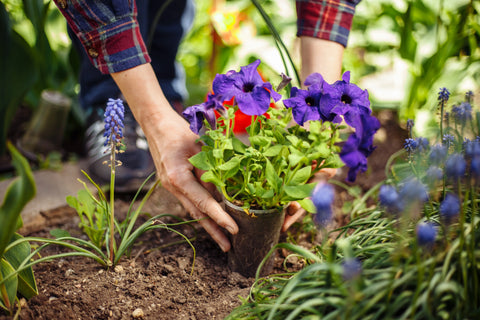How do you get these plants from Eureka farms?
Eureka Farms offers a wide selection of privacy plants. If you have decided to buy privacy plants online, we are here to help. Our online plant nursery has many different types of plants, including landscape plants, houseplants, and fruit trees. We take great care when packing and shipping our plants nationwide, ensuring they arrive healthy and thriving. You can order now and receive your plants in just a few days.
Features of Shade-Loving Trees
Shade-loving plants usually have an adaptive nature. Many shade plants have large leaves to maximize surface area for capturing sunlight. Some shade plants have variegated leaves with different colors or patterns, which can help them absorb more. They often have adaptations to retain moisture since they may not receive as much direct sunlight to dry the soil. Many shade-loving plants have shallow root systems that efficiently absorb nutrients and moisture from the top layers of soil. Some shade plants have flexible stems or a trailing growth habitat, allowing them to adapt to low light conditions by reaching toward available sunlight. They often prioritize foliage over flowers since they may not receive enough sunlight to support flowering. They can often tolerate a range of light conditions, from partial shade to full shade, making them versatile for a variety of garden environments.
Benefits of Shade-loving Trees
Shade-loving trees provide much-needed relief from the sun’s harsh rays. They create a comfortable outdoor space for relaxation and recreation. In gardens, they provide vibrant greenery, creating serene spaces in shaded areas where other plants struggle to grow. These plants are often low-maintenance, requiring less watering and upkeep than their sun-loving counterparts. Their adaptability to low light conditions makes them ideal for landscaping in shaded corners, under trees, or along north-facing walls where sunlight is limited. Shade plants can help mitigate soil erosion, improve air quality, and provide habitat and food sources for local wildlife. They serve as natural air purifiers, enhancing indoor air quality while adding a touch of greenery to spaces with limited natural light. Overall, the benefits of shade-loving plants extend beyond aesthetics, contributing to healthier ecosystems and more sustainable landscapes.
Care Tips for Shade-loving Trees
Shade-loving trees grow well in low-light conditions. It’s essential to provide them with sufficient filtered sunlight to promote healthy growth and flowering. Water them consistently according to a schedule. Regular pruning helps shape the tree, remove dead or diseased branches, and encourage proper growth. It is preferable to prune these trees during the dormant season to minimize stress. Apply a balanced, slow-releasing fertilizer in the spring to provide all the necessary nutrients for growth and flowering. Mulching around the base of the shade-loving trees to retain moisture is noteworthy. Keep mulch away from the trunk to prevent rot and disease.
Conclusion
Shade-loving trees are invaluable additions to any landscape. They enhance the beauty and functionality of outdoor spaces. From their ability to thrive in low light conditions to their role in improving air quality and providing habitat for wildlife, these trees are true champions of sustainability and environmental friendliness. They grace urban parks, suburban gardens, or indoor spaces. Shade-loving trees are resilient symbols of adaptability.







